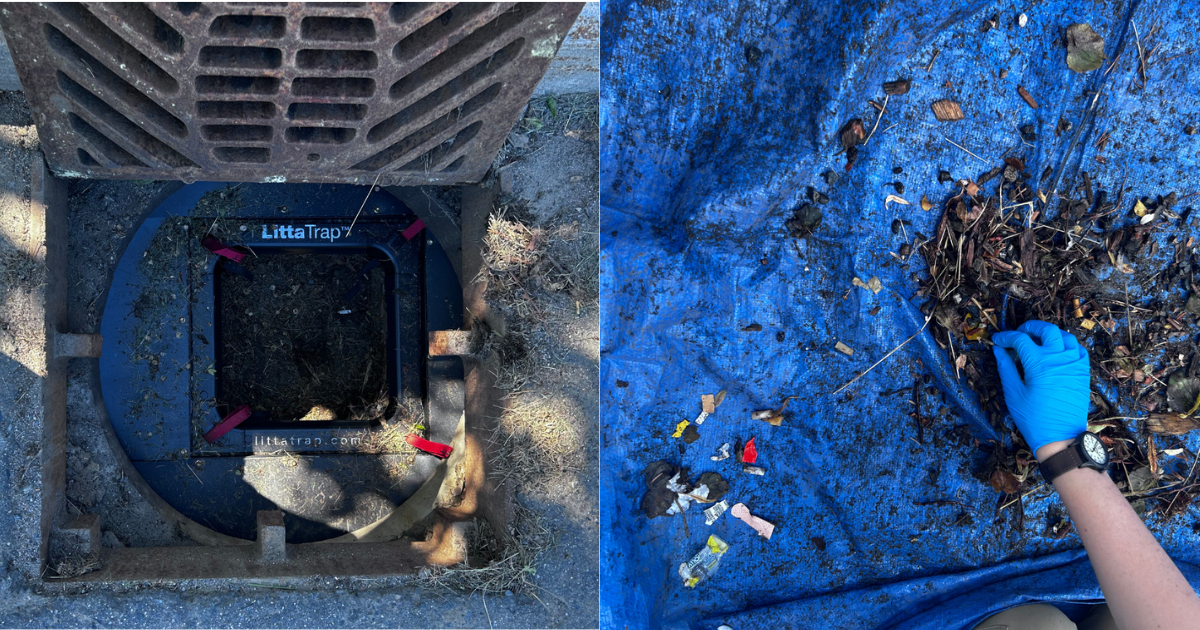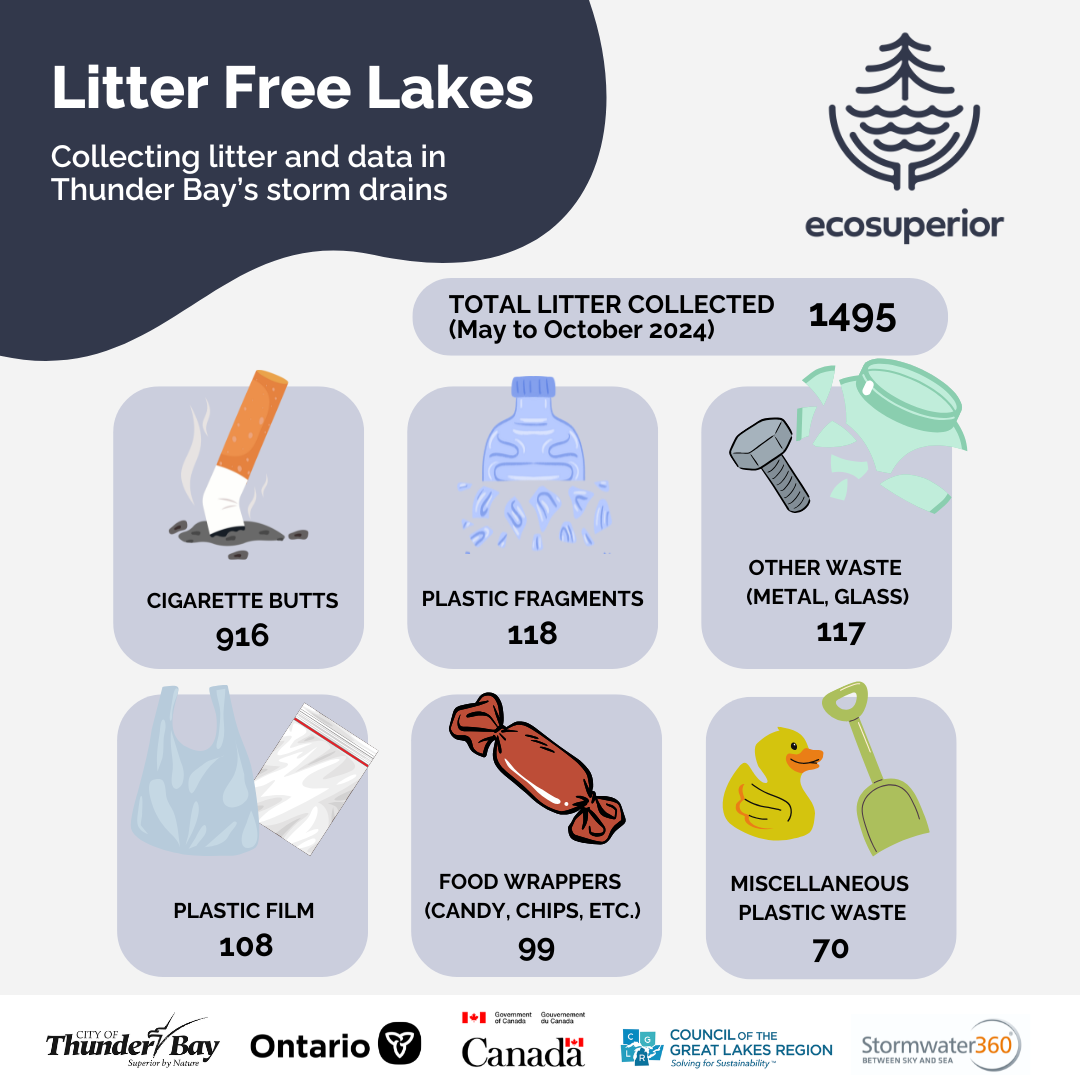Storm Drain Filtration
Storm Drain Filtration
An estimated 70,000 pounds of plastic pollution ends up in Lake Superior every year. Urban runoff is the main pathway by which plastic pollution enters the Great Lakes. During heavy rainfall events and spring snow melt, water flows over paved surfaces and picks up pollutants like fertilizers, oil, and physical pollution. These contaminants flow into storm drains that often lead directly to local waterways without any treatment.
Litter Free Lakes Project
In the spring of 2024, EcoSuperior installed 16 LittaTraps around Thunder Bay. These devices sit inside storm drains and capture litter before it reaches Lake Superior. Every month during the summer, we collect and quantify the litter in the LittaTraps. This data helps us to measure our positive impact, and can be used to inform waste management decisions by helping us understand patterns of pollution in our city.

Monitoring Litter in Thunder Bay's Storm Drains
Collecting data on the pollution in our storm drains helps us measure our positive impact on Lake Superior. During the summer, our team visits each LittaTrap once a month to monitor the amount and type of litter that was collected. We follow the harmonized data collection protocol designed by the International Trash Trap Network, and upload our results to the International Coastal Cleanup database. This public data is used by scientists, educators, and policy advocates to inform global plastic pollution reduction strategies.
Results from the Littatrap Project in 2024

The Litter Free Lakes project is funded by the Ontario Ministry of the Environment, Conservation and Parks, the Government of Canada, Council of the Great Lakes Region, Stormwater 360 Group, and the City of Thunder Bay.
